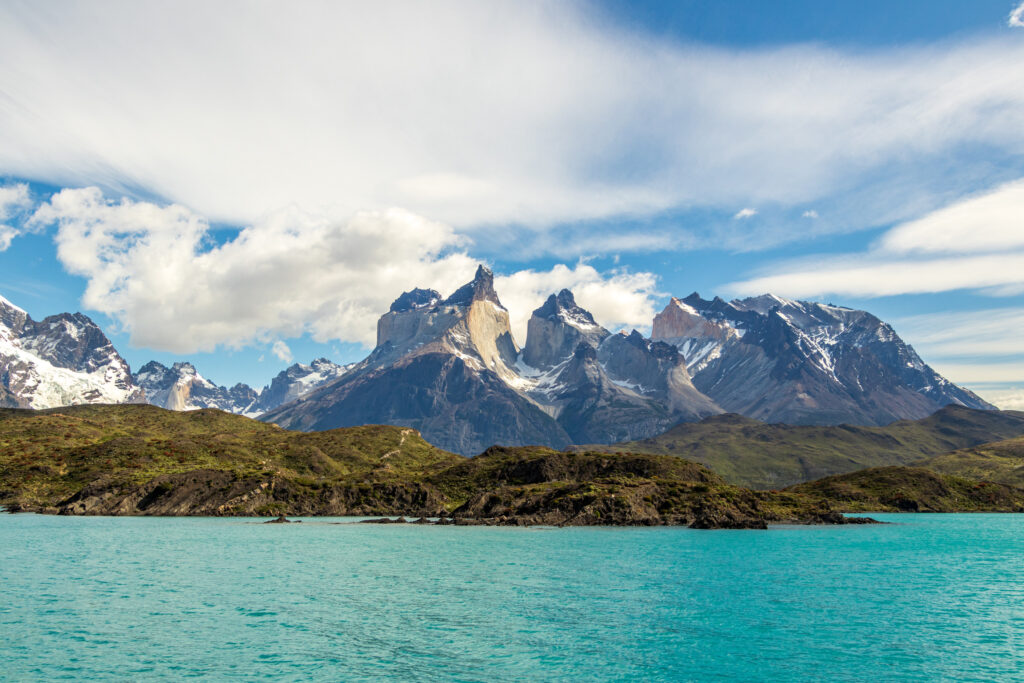
Disclosure: This post may contain affiliate links. I get a commission if you decide to purchase through my links, at no cost to you. Please read my terms of use policy for more information.
Located in Chilean Patagonia, Torres Del Paine National Park is a world all on its own. If you’re collecting National Park experiences this is one you’ll want to add to your bucket list.
There are endless ways to experience Torres del Paine. No matter when or how you choose to visit there is no wrong way to explore Chilean Patagonia. I hope this post gives you some insight into this lesser-known corner of the world and helps you plan your next adventure.
How to get to Torres del Paine
Torres del Paine is a beautiful national park located in the heart of Chilean Patagonia. There are three main ways to access the park either through Chile or Argentina. Most international flights to Chile land in Santiago, from where you can take a flight to either Punta Arenas or Puerto Natales to reach the park.
Puerto Natales
Puerto Natales is a city located in the Magallanes and Antarctic Chilena Region in the southernmost part of Chile. It is a popular starting point for those traveling to Torres del Paine National Park. Many of the travel agencies that help coordinate travel into Torres del Paine will pick you up from here at the bus station. Finding accommodations in Puerto Natales is relatively simple. You have options ranging from hotels, hostels, air bnb’s, and even campsites. There is no lack of amazing restaurants to explore. You can also rent or buy any last-minute camping gear while in town.
Punta Arenas
Punta Arenas is also located in the Magallanes and Antártica Region, and it is one of the southernmost cities in the world. If you plan to travel from Punta Arenas to Puerto Natales, you can either rent a car or take a bus. Buses Pacheco offers direct pickup from the airport, while Buses Fernandez provides pickup from the city center. The bus journey takes around 3 hours to reach Puerto Natales.
Argentina
If you are combining Torres Del Paine into a larger trip encompassing Argentina chances are you are going to be traveling through El Calafate. El Calafate is the main entry point to Los Glaciares National Park in Argentina. You can fly from Buenos Aires to El Calafate and from El Calafate you can take a bus to Puerto Natales. The bus ride is approximately 6 hours. You can also arrange private transfers which can be more pricey depending on your group size.
Book your flights to torres del paine!
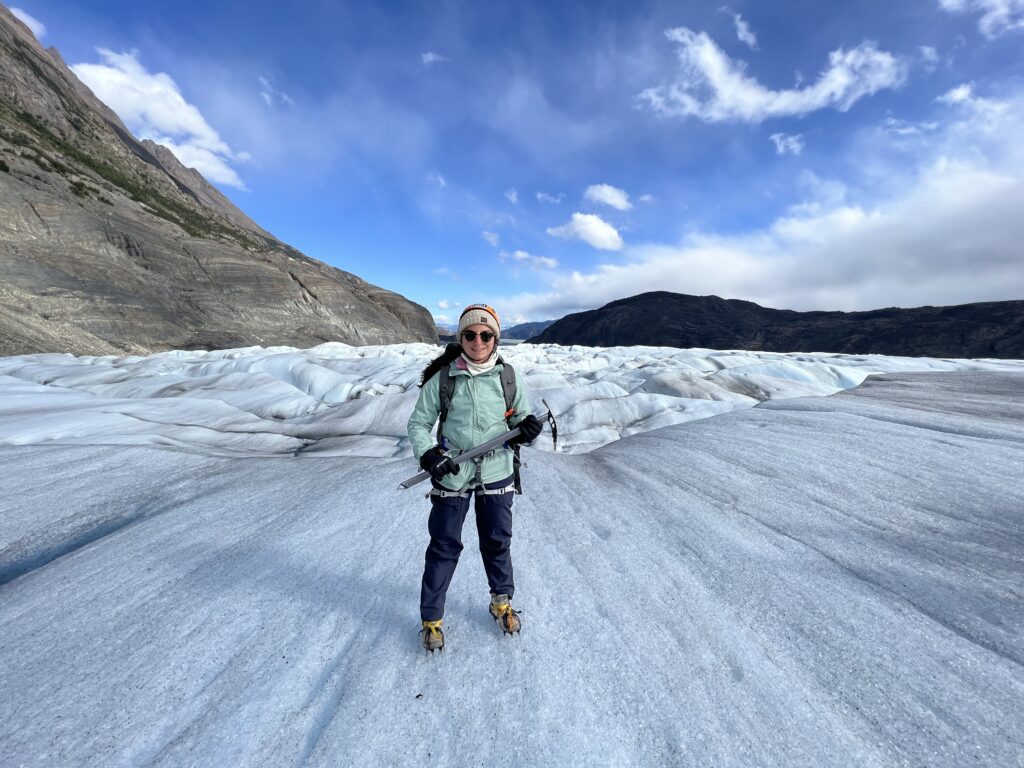
Things to do in Torres del Paine
There are countless ways to experience Torres del Paine National Park. You can visit it for a day or spend over a week trekking through its incredible landscapes. The park offers a huge variety of trails to explore and activities such as horseback riding or kayaking. You can also take a boat that will bring you up close and personal to the park’s incredible glaciers. If you’re feeling more adventurous, you can opt for a glacier hike.
It is possible to plan your own activities at Torres del Paine, and this option is often more affordable. However, if you prefer to travel with less stress, many travel companies can assist you in planning your trip. They offer a variety of options, including multi-day treks, day trips, and private tours.
- Swoop is a company that offers various tours and activities to help you plan your visit.
One of the most popular and immersive ways to experience Torres del Paine National Park is by completing either the W Trek or the O Trek. These are two multi-day treks that will take you through various trails around the park, while staying overnight at campsites or refugios.
I personally completed the W Trek in November of 2022. If you’re interested in a detailed overview of the W Trek and what you can expect, feel free to check out my blog post titled “The W Trek Patagonia: Everything You Need to Know Before You Go.”
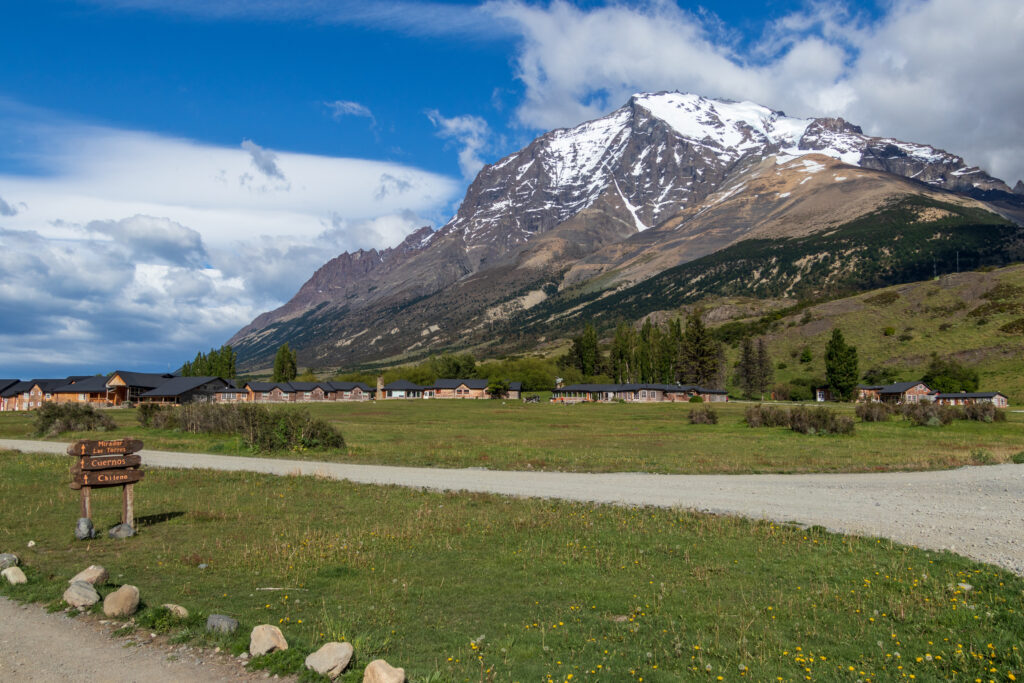
Where to stay in Torres Del Paine
Torres del Paine has accommodation options for every type of adventurer. Whether you want to rough it out or spend a weekend relaxing in comfort there will be an ideal stay for you. This is by no means an all-inclusive guide to Patagonia stays but a general idea for you to start researching for your next trip.
If you want to experience nature while still enjoying the comfort of a bed and private bathroom there are plenty of Hotel and Glamping options. Some of the hotels offer all-inclusive options including an open bar! Depending on which hotel you choose you will have access to day trips and treks as well as different excursions. Hotel Lago Grey and Hotel Torres del Paine are conveniently located at the start/finish of the W trek. These are great options if you want to spend the night in a little more comfort after completing the W trek.
Hotel’s
Hotel Lago Grey
Located on the edge of Lago Grey.
Hotel Lago Grey is great for those wanting to explore the Grey Glacier! From this hotel, you can take a cruise out to Grey Glacier and take some time to explore the west side of the park.
Explora Patagonia
Located on the shores of Lago El Toro.
Explora Patagonia is one of the most luxurious hotels in Patagonia. This hotel is all-inclusive and offers 40 different explorations to the national park that are included in the rate.
Rio Serrano
Located on the Serrano River.
The Rio Serrano hotel is a 30-minute drive from most of the hiking trails so it is best for those that have a car or plan to do guided explorations. It does feature gorgeous views of the mountains with an indoor pool and spa. If you book an all-inclusive room then tours are included.
Hotel Las Torres Patagonia
Located at the start of the Las Torres viewpoint hike.
Hotel Las Torres Patagonia is one of the most popular hotels in the park due to its location. It is perfect for exploring the east side of the park and wanting to hike the famous Las Torres. It does offer all-inclusive options.

Glamping
Glamping is another great way to explore the park while still enjoying comfort, privacy, and a hot shower at the end of the day. There are three main options for glamping in Torres del Paine as described below. Patagonia camp, although a bit further from the main attractions in the park, is a little more secluded and luxurious for those wanting to experience a little more alone time with nature and their company. Ecocamp and Serrano camps were created more for trekkers who desire a bit more comfort. They can be used as a base camp for day hikes and excursions or can be booked as one-night accommodations as part of the W or O Trek.
Ecocamp Patagonia
Ecocamp is located at the base of the towers. It is a great location for those wanting to hike one of the most well-known hikes in Torres del Paine, Base Torres. From Ecocamp you can experience the magnificent sunrise and sunset over Las Torres.
Serrano Camp
Located near the Serrano River.
Serrano Camp features large tents with a bed and a mattress to sleep on. It offers incredible views of the Paine Massif. They also offer breakfast, lunch, and dinner options. Like Ecocamp, it’s a great option for those wanting a little more comfort on their trekking adventure.
Patagonia Camp
Located near Lago El Torro
Patagonia Camp is a little more luxurious and hidden. To access the hiking trails, you will have to drive but it’s perfect for those who don’t want to sacrifice luxury while also being surrounded by nature.
Refugios
Refugios in Torres del Paine are hostel-like accommodations. They are perfect for those who want to be comfortable and stay indoors while traveling on a budget. Many travel companies offer the option to stay in refugios and will assist you in booking them. If you stay at a Refugio you will be provided with breakfast, dinner, and a packed lunch to take with you on the trail. They have hot showers and provide you with bedding. Each Refugio has a bar where you can unwind after a long day of hiking. The best part is that they are conveniently located along the main trails in the park.
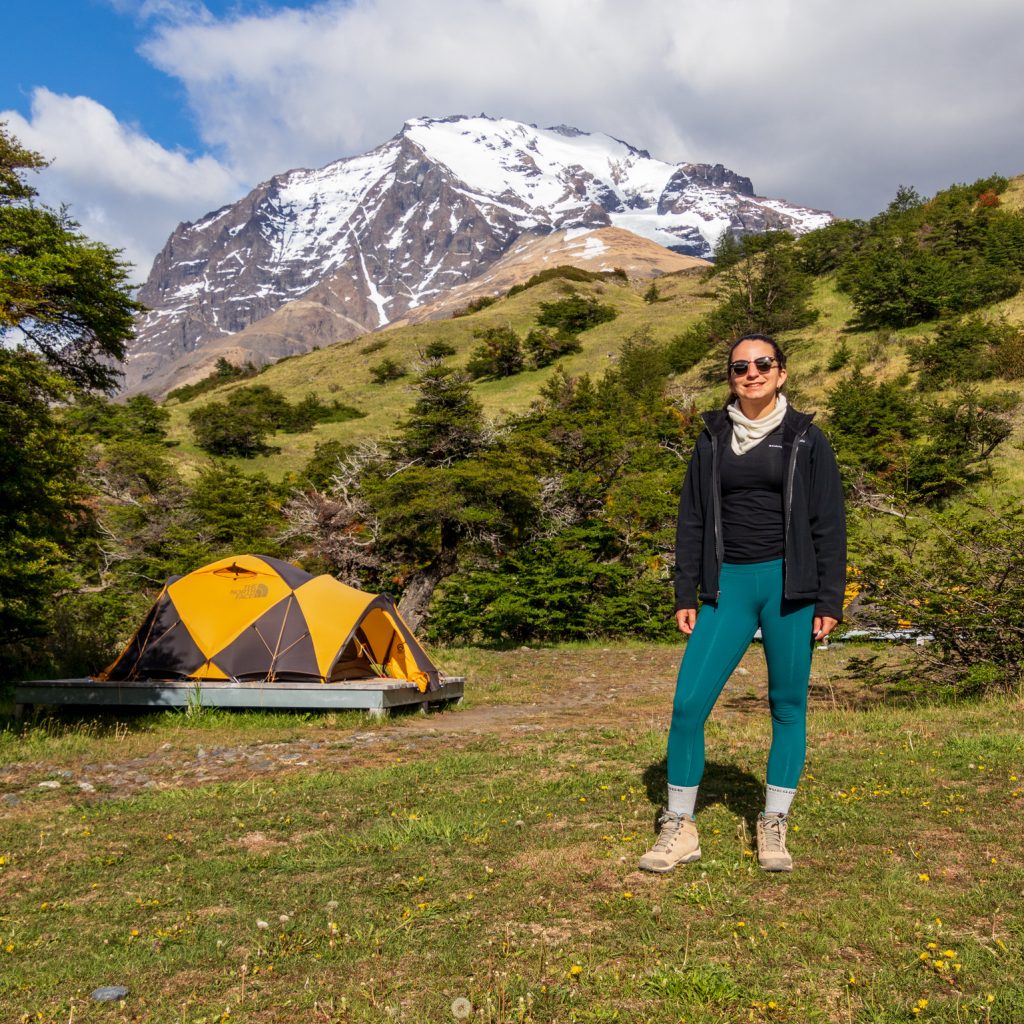
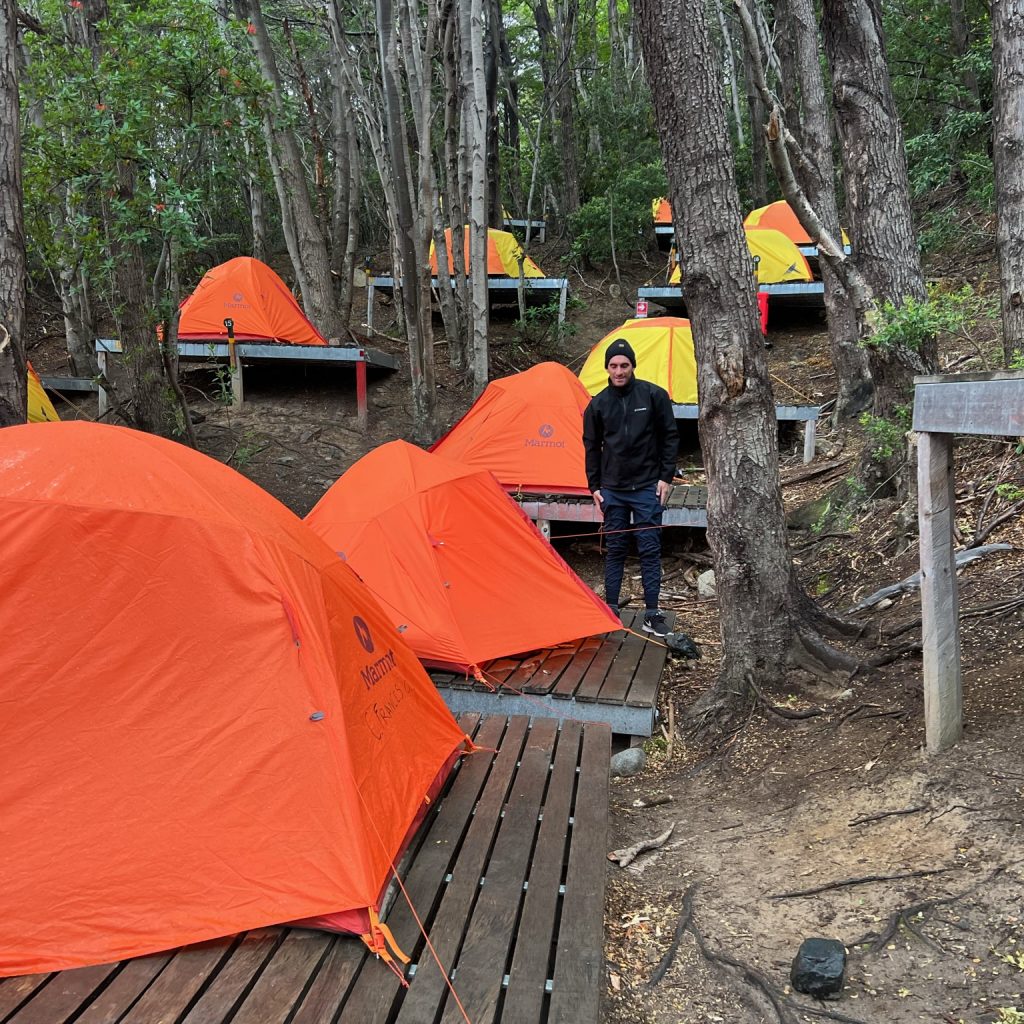
Camping
If you truly want to experience Patagonia in all its wild wonder, then camping is the way to go. Three different companies own all the campsites in Torres del Paine. Las Torres Patagonia (formerly known as Fantastic Sur), Vertice Patagonia, and CONAF. Campsites can be booked through these companies or directly through Torres Hike.
Torres Hike will show you the availability of the campsites for the dates you plan on visiting. I go into more detail on the different campsites and how to plan out your Trek in my post “The W Trek Hike – Patagonia”.
It’s important to keep in mind that as Torres del Paine has become more popular campsites are being booked out months and months ahead of time. If you are planning on camping I would recommend planning your trip a year in advance and making sure you are aware of when the booking window opens.
When to visit Torres Del Paine
Torres Del Paine is a year-round destination, offering a unique experience each season. Your choice of when to visit depends on your expectations and what you want to gain from your trip.
Spring (October- November)
During this time of year, you can expect warm days and cold nights, with temperatures ranging from the low 30s to the high 60s Fahrenheit. The days will be longer and the nights shorter, which is perfect for those attempting the W or O Trek. You can expect sunlight to last between 12-16 hours per day.
Springtime brings strong winds and unpredictable weather. You will have to pack for a variety of temperatures. Snow might still be present in some areas but you will also begin to see beautiful wildflowers in bloom. Baby Guanacos start to appear throughout the park which is an incredible sight to see. If you’re looking to experience Patagonia before the summer crowds hit and are unbothered by a little unpredictability, spring is an ideal time to plan your trip.
Summer (December – February)
Summer is the busiest season of the year, with good reason. Long days, up to 17 hours of sunshine, and warm temperatures throughout the day. Temperatures can still range from the low 30s to the high 60s Fahrenheit. But you will experience cool and no longer cold nights. Summer has less rainfall than other seasons but can bring some of the strongest winds. Winds in Patagonia typically range from 15-20 km/h with gusts up to 120 km/h.
Summertime will give you the greatest accessibility to all park trails and activities. It’s a wonderful time to experience all Patagonia has to offer. If you do decide that summer is the ideal time for you to visit keep in mind that you will have to plan your trip months ahead of time as accommodations and activities can sell out quickly in peak season.
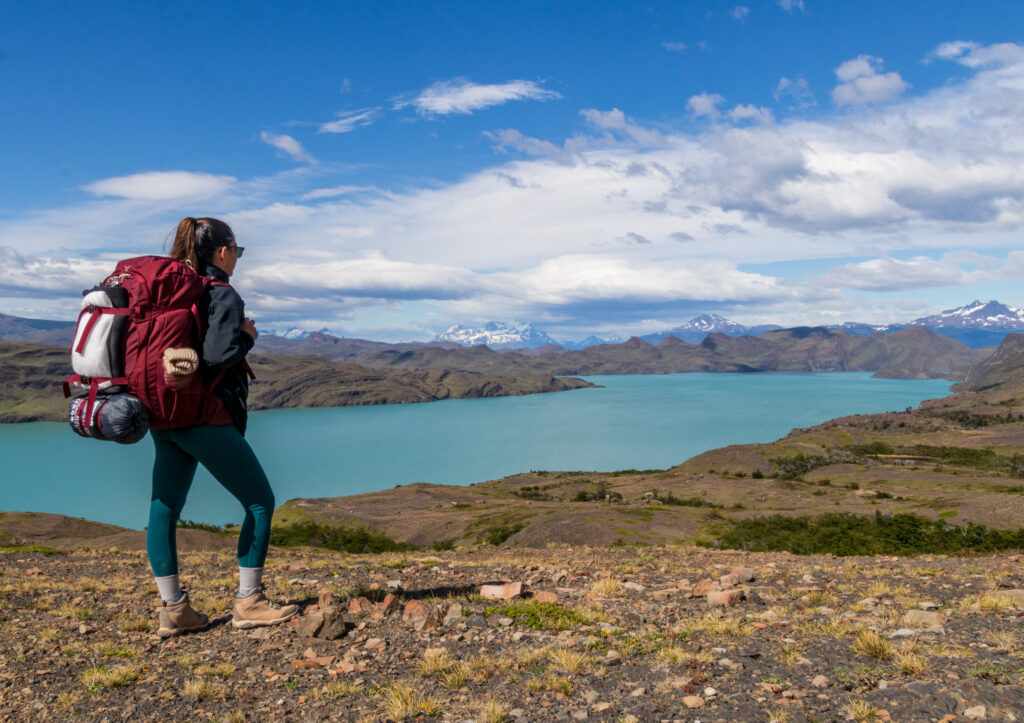
Autumn (March- April)
During autumn the days and nights become colder. Temperatures range from the low 20s to the low 50s Fahrenheit. There is the possibility of rain and even snow as you head into the winter months. Some areas of the park and accommodations may also begin to shut down.
Autumn brings beautiful orange/red colors and fewer crowds. With fewer hikers on the trails, there is a higher possibility of seeing animals. This is a great opportunity for wildlife and landscape photographers.
Winter (May – September)
Winter in Torres del Paine is a truly unique experience. You will have the park almost entirely to yourself as few dare to venture out during this time. Temperatures are quite cold ranging from the low 20s to the high 40s Fahrenheit.
While unpredictable weather can bring the possibility of snowstorms, sunny winter days are perfect for exploring some of the most iconic sights such as Glacier Grey. Options for accommodations will be limited during the winter months and not all areas of the park will be open so it is important to plan ahead of time.
No matter what season you choose to visit, the weather in Patagonia is wildly unpredictable. A beautiful spring sunny day can quickly bring tropical storm-force winds. A gloomy and cold rainy morning will usher in some of the warmest temperatures later in the day.

My Experience
I visited in November. Which is the end of spring and the beginning of summer. We experienced long warm days and cool nights. Even so, we had to pack multiple layers including rain gear, coats, warmers, and tanks. Sometimes you would find yourself dressing and undressing in all these layers within an hour.
The most important piece of advice I can give, based on my experience, is to approach Patagonia with an open mind. Two people visiting the place on the same day will never have the same experience; that’s the beauty of this place. I hope this post has helped you learn a little bit about this incredible destination and has set you on track to plan your next adventure.
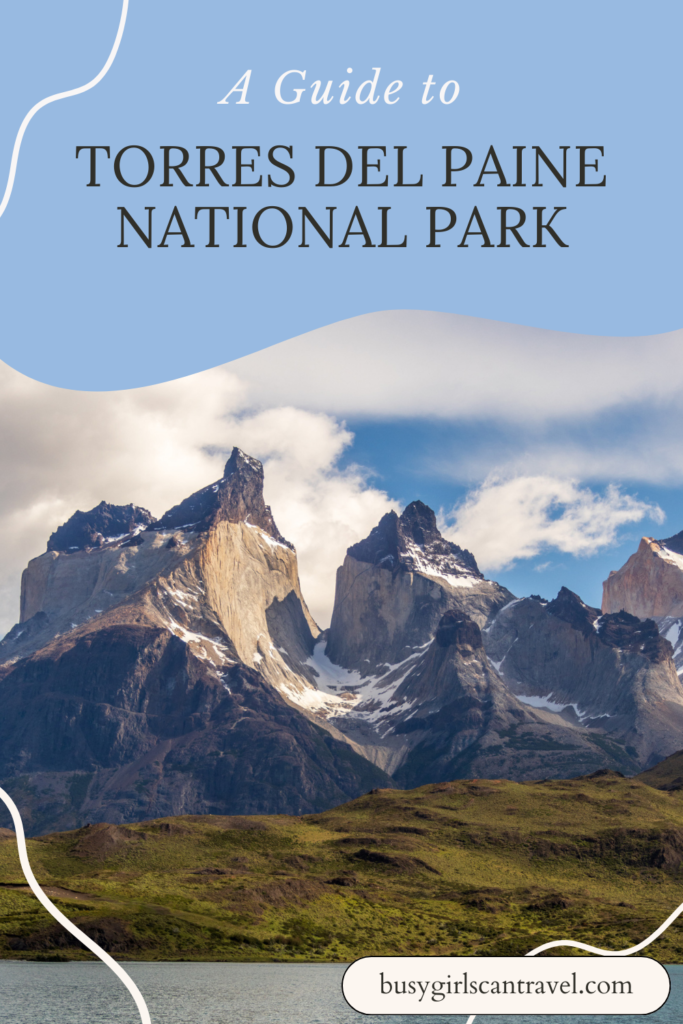

Very informative and useful! I hope one day I can have such a wonderful experience. Love it!
Place that I would like to visit, the information is very complete, and your experience there is unforgettable, good job and thanks to you.
This blog is so helpful.